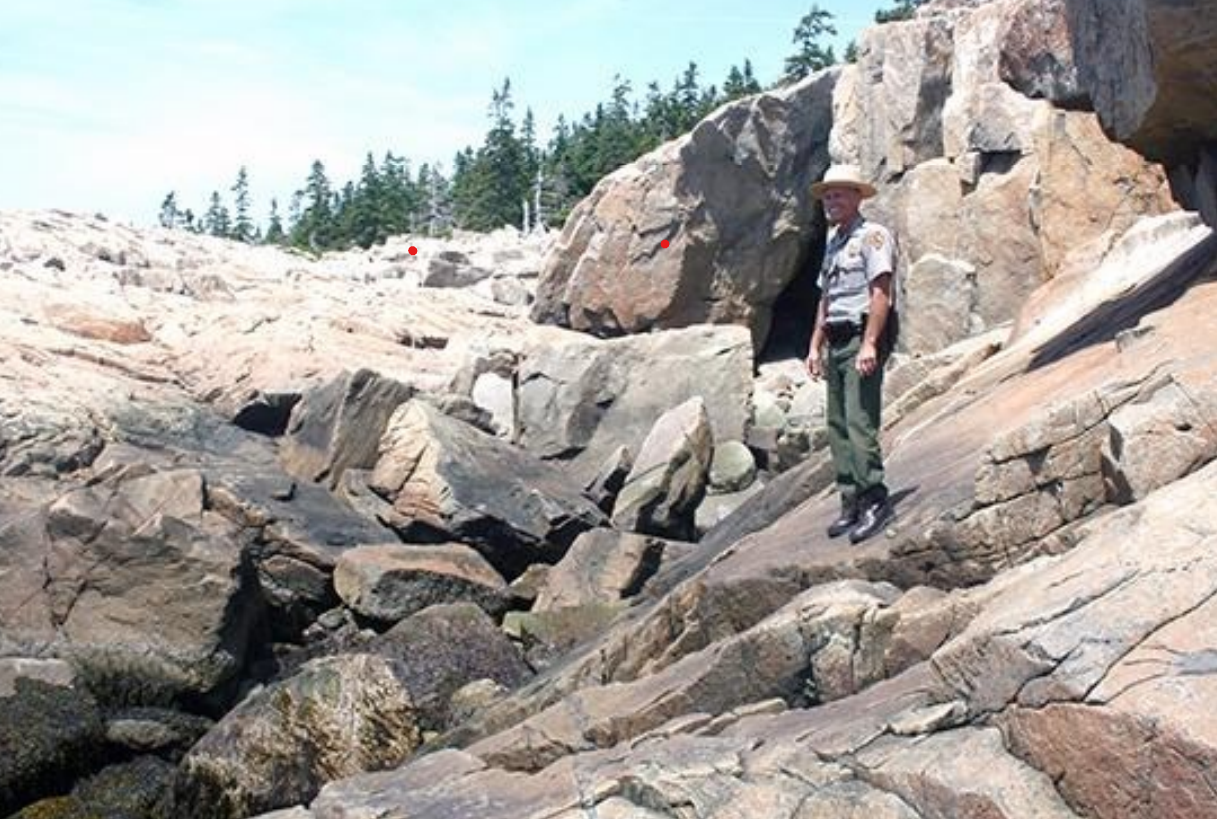From the Archives in November 2014: When National Park Users Collect Rocks, They're Committing a Crime
by Laurie Schreiber, MSDC Contributor. Originally used with permission from Tom Groening, Editor, The Working Waterfront, workingwaterfront.com.

Most folks are good-natured when caught stealing rocks at Schoodic Peninsula, the mainland section of Acadia National Park. Visitors properly take pictures, not rocks. At one beach, park ranger Bill Weidner had a hunch. "The hatch was open on a van, stacks of clean towels in back," he said. He politely approached the owner and said to the woman at the van, "You know, I was kind of wondering if you have any rocks." She laughed, and Weidner responded, "I don't see the joke." She then said, "Well, we were loading these rocks, and my husband said, 'I hope the rock police don't come.'" Weidner conceded the violators "have a sense of humor."
A congenial man whose daily duties include monitoring the safety of sightseers perilously close to Schoodic's surf, Weidner also oversees the integrity of the natural resource. Recently, he pointed out the vast, fractured ledges of pink granite, interspersed with black basalt and the odd, rounded boulder carried by glacier from a distinct geological region miles away. "There's so much uniqueness among these rocks," he said. That's why folks steal them. After all, the glacier-scoured, wave-polished rounded stones are most attractive, beguiling to the eye, and pleasant to handle. It's natural that people want souvenirs where the supply seems endless. But it's illegal to take them. The federal violation results in a $50 fine and $25 court fee. Revenue goes to a fund for federal-crime victims.
Some favor "wish" rocks—mainly black, with a white ring. Heart-shaped rocks also are popular. People take rocks for landscaping. Why is it illegal to collect this abundant resource? "If you like those rocks, if you take them away, the next person won't be able to see them. They belong to everyone," Weidner said.
The other aspect of the rock story is the tendency of some people to build trail cairns or beach sculptures. The former, he said, poses a safety risk for other hikers trying to keep to the trail. The latter is an aesthetic invasion. "All of the staff and volunteers knock them down," he said. "The idea of a national park is to see it the way it is." Weidner, who has worked at Acadia on and off since 1977, has plenty more stories.
"This lady was kind of falling over with this heavy bag. I thought, 'Is this going to be an EMS call, or is it rocks?' I said, 'Ma'am are you OK?' 'Oh yeah.' I said, 'What do you have in the bag?' 'Oh, it's full of rocks.' I said, 'Didn't you see the sign right there?' She says, 'Yeah, but it didn't say I'd get a fine.'"
"They were having problems at the airport in Bar Harbor with luggage. It was overweight," he said. "There were too many rocks in people's suitcases." "I was having a yard sale. A woman's there, sorting through our stuff. Her cellphone rings. She talks, then says to her friend, 'That's my husband. He saw an article about stealing rocks out of Schoodic. We shouldn't take any today.' She had no idea I was a park ranger."
A French-speaking Canadian holding some rocks said she thought the "don't remove" sign meant not to remove rocks from here to there on the beach. She said she had no more rocks. Because of the apparent language barrier, Weidner planned to give her just a warning. She opened the trunk to get identification—revealing a pile of rocks. Weidner is humorous in such situations. "I slapped my head and said, 'Oh, mon dieu!' I try not to embarrass people. But I don't like to be lied to. I wrote her a ticket."
